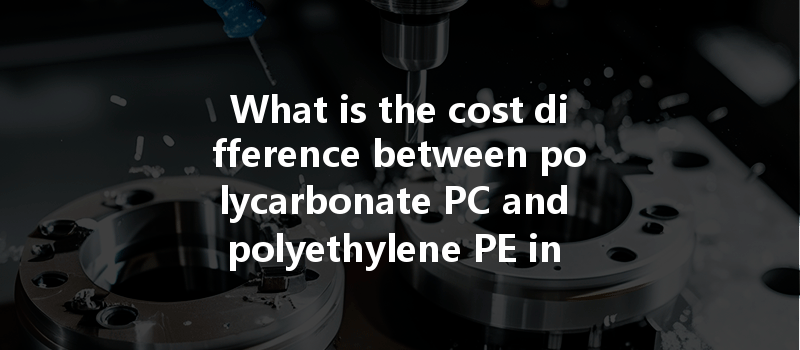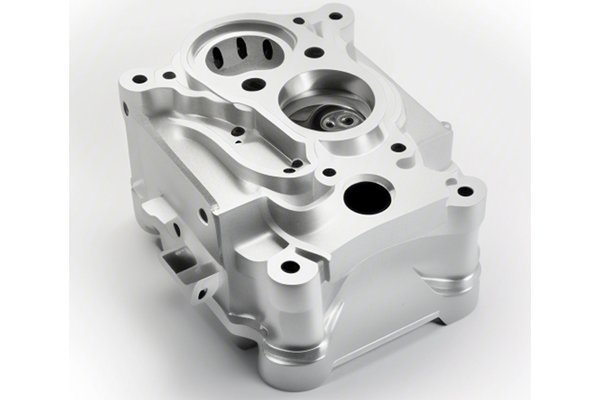Opening:
Did you know that the global CNC machining market is expected to reach a staggering $117 billion by 2025? This rapid growth is attributed to the increasing demand for precision engineering in various industries, including aerospace, automotive, and medical sectors. A significant factor in the increasing project costs in this field is the material choice, particularly when comparing common engineering plastics like polycarbonate (PC) and polyethylene (PE). This begs the question: how does the cost of CNC machining differ between these two materials, and what implications does this have for your project budget?
Content:
Understanding the cost differences between polycarbonate and polyethylene in CNC machining is crucial for manufacturers and engineers looking to optimize their materials for specific applications. This guide aims to break down the essential considerations and economic implications associated with choosing between these two materials for your CNC machining projects.
Polycarbonate (PC)
Polycarbonate is a high-performance thermoplastic known for its exceptional strength and durability. It is an excellent choice for applications that require impact resistance and optical clarity, such as in the production of safety goggles, automotive parts, and medical devices. However, it also comes with a higher cost due to its manufacturing process and properties.
Polyethylene (PE)
On the other hand, polyethylene is one of the most widely used plastics in the world. Known for its flexibility and chemical resistance, PE is commonly used in packaging, containers, and some industrial applications. It’s less expensive compared to polycarbonate, making it an attractive option for projects where cost efficiency is critical.
When examining the cost implications of using PC or PE in CNC machining, several factors come into play:
a. Material Cost
The first point to consider is the initial material cost. Polycarbonate can be significantly more expensive than polyethylene, sometimes up to three times as much depending on the specific grade and supplier. Therefore, if you have a limit on your project budget, PE may offer a more cost-efficient option.
b. Machining Process and Equipment
The CNC machining process itself also plays a crucial role in framing the overall costs. Polycarbonate requires specific tooling to handle its brittleness and thermal sensitivity. The machining parameters like speed, feed rate, and cutting tools differ for PC and PE, impacting labor costs and the wear and tear on equipment.

The finishing processes required after CNC machining can also affect overall costs. Polycarbonate often needs more extensive post-processing due to its susceptibility to scratches and distortions. Additional treatments may include polishing or coating to enhance surface quality and durability.
Conversely, polyethylene often requires minimal post-processing and can usually be used right after machining, making it a budget-friendly choice.
Understanding the application’s requirements is essential when comparing PC and PE costs. Here are scenarios where either material may shine based on project needs:
It’s essential to consider not just upfront costs but also long-term expenses related to maintenance, durability, and performance over time. A higher initial investment in polycarbonate can mean lower replacement costs in high-wear applications, while a cheaper initial investment in polyethylene might result in more frequent replacements or repairs.
In the fancy world of CNC machining, the battle between polycarbonate and polyethylene is a critical decision that can significantly impact project cost and performance. When comparing the two materials, polycarbonate offers superior strength and durability but at a higher price point, while polyethylene is more economical but may lack the performance attributes required for high-stress applications.
Ultimately, the choice between polycarbonate and polyethylene in CNC machining projects should be based on a thorough analysis of material properties, financial constraints, project requirements, and long-term considerations. Understanding these factors can help you make a more informed decision that balances performance with cost efficiency.
As the CNC machining landscape continues to evolve, it’s vital for engineers and manufacturers to remain abreast of the latest material insights. This knowledge not only facilitates smarter material choices but also ensures that the resulting products meet both quality and budgetary expectations. In light of the anticipated growth of the CNC machining market, thinking critically about these material selections will prove invaluable as you navigate your future projects.
This blog is essential for anyone involved in CNC machining, as it lays the groundwork for an informed approach to selecting materials that align with both operational goals and financial strategies. By comprehensively understanding these facets of PC and PE, you equip yourself to make better choices for your projects, ensuring increased competitiveness in an ever-evolving industry.






